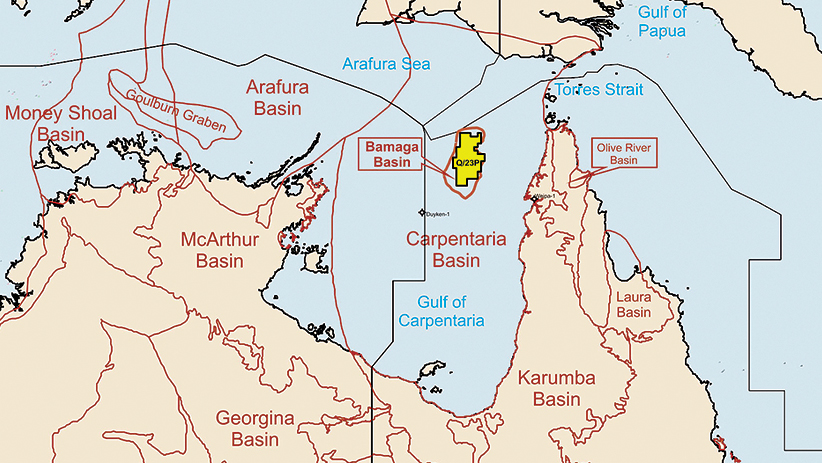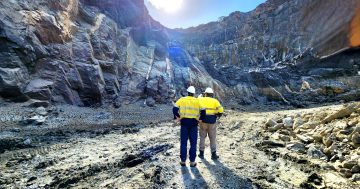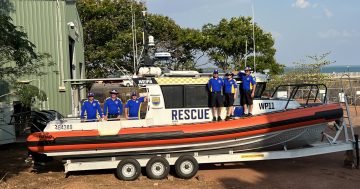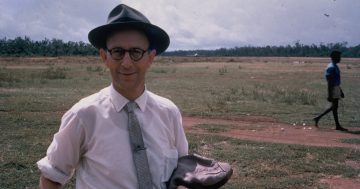
A PATCH of underwater land in the Gulf of Carpentaria could hold several trillion cubic feet of natural gas or hundreds of millions of barrels of oil – at least that’s what a company with the rights to drill it for exploration is saying.
Gulf Energy believes a parcel of sea, labelled the Bamaga Basin and listed as Q/23P on maps, could provide a major windfall and employment opportunities.
However, the New South Wales-based company did not return phone calls or emails when contacted by Cape York Weekly.
On its website, Gulf Energy says the basin’s advantages are its water depth (60m) and proximity to shore (150km), which “make it operationally and commercially attractive”.
“Gulf Energy plans to drill the first exploration well a huge four-way dip closure covering 200 square kilometres in area,” the company’s website states.
Gulf Energy managing director Wolfgang Fischer could not be contacted for comment about the company’s plans for 2022.
On its website, Gulf Energy says it has until August 17, 2022 to drill the first exploration well in the Bamaga Basin (Q/23P).
“It also means the end of the current, second permit term for Q/23P has been moved by two years to August 17, 2024,” a statement on the company’s website says.
“In February last year, the National Offshore Petroleum Titles Administrator advised Gulf Energy that it had been granted a two-year suspension and extension to its offshore petroleum exploration permit.
“The opportunity to apply for a suspension and extension to drill the first well was the result of the meeting of federal and state Resources Ministers in April 2020, at which the offshore petroleum joint authorities recognised that the COVID-19 pandemic was having a significant negative impact on the petroleum sector and additional flexibility would be required to assist titleholders to manage and plan their way through the crisis.
“By offering flexibility in meeting permit work obligations the joint authority sought to ensure continuity of exploration effort rather than a reduction.
“A gas discovery and resultant production from Q/23P would:
l Create a new “energy hub” in northern Australia producing natural gas and, if it is commercially feasible, possibly also blue hydrogen combined with carbon capture and storage.
l Be the catalyst for development around the Gulf of Carpentaria.
l Add billions of dollars of increased economic activity to Australia’s economy.
l Contribute to achieving the objectives of the Commonwealth government’s Gas-Fired Recovery initiative and its White Paper on developing northern Australia entitled Our North, Our Future.
The prospect of off-shore gas drilling is sure to be a contentious issue and federal Member for Leichhardt Warren Entsch said he had doubts it would ever happen in the Gulf of Carpentaria.
“I would be very concerned if it did,” he said.
“The impact it would have would be quite significant. We have enough environmental challenges in the Gulf without creating another one.
“The question I would ask is will it be beneficial in the long run? I believe we are moving away from that kind of energy.”
Weipa Town Authority chair Michael Rowland said the prospect of another major employer in the Weipa region, albeit off-shore was at least worth discussing.
“There has been talk for years about putting a gas pipeline through the Cape,” he said.
“If it were to happen I’d be interested to see if there would be any benefits to Weipa.
“Our harbour is about to be freed up with mining heading south of Weipa so it could be a good place for exporting gas.”
Gulf Energy believes it can clear any red tape due to the location of the gas deposit.
“Q/23P is offshore, under Commonwealth jurisdiction. No state ‘holdups’,” the website said.
“Because Gulf Energy holds all of the Bamaga Basin it can execute a comprehensive, coordinated approach to exploration and development.
“The Bamaga Basin has the potential to be a key gas supplier to eastern Australia.
“Large, drillable targets could help meet impending east coast Australia gas shortfalls.”
Watch this space.





